Discover Austroads: Transport Research and Trends
Austroads: Transport Research and Trends

295 Episodes
Reverse
The Austroads Bridge Awards celebrate outstanding achievement in bridge design, management and delivery across Australia and New Zealand. Recognising innovation, technical excellence and collaboration, the Awards highlight projects that address complex engineering challenges while contributing to safer, stronger and more connected communities.
This was the first of two webinars showcasing the 2025 Award winners. Presenters shared insights into the design, delivery and outcomes of their projects and answered audience questions.
This session covered:
Excellence in Sustainability – Victoria Bridge Refurbishment QLD, submitted by Arup, Brisbane City Council, Nick Stevens Consulting, ACCIONA and Freyssinet Australia
Excellence in Innovation – Kangaroo Point Bridge, submitted by BESIX Watpac and Brisbane City Council
Excellence in Asset Management and Maintenance – Manganuku Bridge Strengthening, submitted by Beca, NZ Transport Agency Waka Kotahi, Contech, Optimech International Ltd and Eastbridge Ltd.
This practical webinar unpacks the new cycling and micromobility planning tools from Austroads' recent report ‘Improving Austroads Guidance for Cycling and Micromobility Planning’ (AP-R724-25). This session is designed for transport practitioners looking to apply best practice principles in real-world projects.
Presenters explore the updated Cycling Level of Service (CLoS) tool, the All Ages and Abilities Facility Selection tool, and discuss practical approaches to road space reallocation, intersection design, and micromobility integration. Whether you're working in planning, design, or delivery, this webinar will help you navigate the tools and apply them confidently to uplift cycling outcomes across your network.
Governments around the world have set sustainability targets in areas such as greenhouse gas emissions , climate resilience and the circular economy. Meeting these sustainability targets will challenge Austroads member agencies and the infrastructure sector to identify and adopt new and changed approaches.
This webinar presented the findings of the Austroads research report, Sustainability Review of Austroads Technical Specifications and Test Methods. Drawing from lessons learned from preparing the report, presenters explored the research that examined Austroads Technical Specifications to identify specific opportunities for improvement and how to addresses barriers that hinder progress.
Movement and Place is a cross-cutting planning principle that that recognises streets and roads as both transport corridors and public spaces; supporting the flow of people and goods while also shaping the activity, built form and identity of places.
This webinar introduces the findings of the Austroads research project NEG6384 Movement and Place Guidance, which provides the foundation for updated and more unified Movement and Place content across the Austroads Guide to Traffic Management and related resources.
Through extensive stakeholder consultation and a review of leading national and international frameworks, the project identified gaps in current Austroads guidance. It also revealed the varied maturity levels of implementation across transport agencies in Australia and New Zealand, highlighting a critical opportunity to strengthen consistency, collaboration and innovation.
The report sets out a series of recommendations designed to update and streamline Movement and Place guidance, focusing on:
Consistency: A shared language and core concepts across Austroads publications.
Best Practice: Identification of proven tools and frameworks already in use.
Clarity: Practical direction through case studies and real-world examples.
Whether you’re new to Movement and Place or working to embed it within policy, planning or project delivery, this webinar will help you understand how updated guidance can support more balanced, people-focused transport networks across the region.
In this webinar, Sjaan Koppel, winner of the Austroads-sponsored Women in Road Safety Award 2024, presents findings from an Australian study on the importance of correct seatbelt use during pregnancy for maternal and fetal safety in car crashes.
Sjaan discusses practical strategies to improve public health messaging, healthcare guidance, and vehicle design, providing valuable insights for road safety stakeholders and healthcare providers.
Inconsistency in the design of traffic barriers for bridges has been identified as a major issue in current practice throughout Australia and New Zealand. The need for standardised solutions has been recognised by road jurisdictions, consultants, and contractors. Key concerns include the determination of appropriate barrier performance levels, structural design criteria, the lack of standard barrier design details, guidance on retrofitting existing bridge barriers, bridge approach barriers and overpass bridge support protection.
To address this, Austroads commissioned a review of the Austroads Standardised Bridge Barrier Design Report AP-R445-13 1 based on current research, guidance, and standards. The project also aimed to verify compliance of bridge barrier designs and guidelines against the relevant Australian Standards that have been recently updated, and the American Association of Highway and Transportation Officials (AASHTO) Manual for Assessing Safety Hardware (MASH). To achieve this a comprehensive literature review was undertaken, full scale crash testing was conducted and Finite Element Modelling created and calibrated.
This webinar covered:
The project and updated Austroads Standardised Bridge Barrier Design Guideline
The crash testing including Finite Element Modelling and full-scale crash test.
The transport sector, particularly in road network operations and management, is experiencing a period of significant and rapid change globally. This disruption is directly affecting how people and industry access, navigate and use transport and road networks. Expectations around transport, travel needs and user behaviour are shifting.
More broadly, these changes are contributing to the growing momentum to improve how we live and work, and how our cities function and evolve. As a result, the capabilities needed to manage and operate transport networks are also changing quickly.
The changes within the sector can be grouped into five key areas:
network safety
technological advancements
environmental sustainability and climate change
shifting network demands
evolving customer and stakeholder expectations
In response, Austroads has commissioned the Road Manager Operations Capability Framework, supported by a research report. Together, these outline how road managers can effectively respond to emerging trends in transport operations.
The framework identifies four core capabilities: communication, stakeholder engagement, leadership and change management. It also outlines four operational capabilities: network management, incident and event management, system management, and data and insights. Each capability is supported by a set of skills mapped against a proficiency matrix.
The webinar, presented by Richard Boggon and Thomas D’Arcy, explores the trends shaping the future of road network operations. It also provides a detailed overview of the capability framework, the skills and proficiencies it defines, and how it can be applied and adopted within the sector.
This webinar provided an overview of the Austroads Report, ‘LED Lighting in Road Tunnels – Best Practice Approaches’ which summarises the process undertaken to explore tunnel lighting upgrades to LED, and provides best practice guidance for tunnel owners and operators considering the transition to more efficient lighting systems.
Many existing tunnels currently use fluorescent or High Pressure Sodium (HPS) lighting, and there is a growing opportunity to replace or retrofit these with more efficient light emitting diode (LED) equivalents. While LED luminaires generally boasts higher efficacy than fluorescent and HPS equivalents, lighting upgrade projects can present major technical and cost challenges.
Drawing on stakeholder consultations and a literature review, this webinar discussed current practices, common challenges, and practical considerations for planning and delivering lighting upgrades. Presenters used local case studies and project experiences to provide recommendations to support informed decision-making throughout the project lifecycle for future projects and also answered attendee questions at the end of the seminar.
As jurisdictions across Australia and New Zealand increasingly rely on data to improve road safety, transport efficiency, and sustainability, Austroads’ Telematics Analytics Platform (TAP) is at the forefront, providing road agencies data to make better-informed decisions.
Managed by Austroads, TAP provides secure, online access to aggregated and anonymised telematics data from vehicles enrolled in the National Telematics Framework schemes. It offers invaluable insights into vehicle movements, road usage, and infrastructure performance, enabling local agencies to optimise their strategies and operations.
This webinar focused on the benefits of using telematics data for local asset management and transport planning – particularly with regard to restricted access heavy vehicles. Presenters spoke about how local transport managers harness data from TAP to drive improvements in infrastructure management, land use and urban planning, road safety, and transport efficiency.
What was covered:
What data is included, and what the data represents
How local road managers are using TAP to enhance road safety, optimise decision-making, and improve road network performance
Key benefits of integrating telematics data into local transport planning and asset management
Automatic Crash Notification (ACN) systems, such as eCall, automatically notifies emergency services in the event of a crash, transmitting key data such as the location, time and severity of the incident. The primary purpose of ACN is to aid faster response time to crashes, increasing the likelihood of occupants surviving a crash. While ACN technology is becoming increasingly common in new vehicles and personal devices like smartphones and smartwatches, Australia and New Zealand face challenges in its adoption.
As part of the project, a research report was developed, which provides a summary of the ACN services emerging in Australia and New Zealand, including their operation, benefits, market uptake, and high-level costs to implement. Approaches taken in other countries are also identified, to assess the applicability and potential implications of these approaches to Australia and New Zealand.
In this webinar, the presenters outlined project aims, methodology, key findings from the report and next steps. Drawing from lessons learned from preparing the report, international deployments and local stakeholder feedback, this webinar explored how ACN can be effectively implemented to maximise safety and economic benefits, and highlight key decisions around technology standardisation, investment in emergency response systems, and ensuring equitable access to the technology. Presenters also answered Q&A at the close of the session.
Are you looking for an opportunity to work with Austroads to help Australian and New Zealand transport agencies deliver efficient, reliable, and safe mobility to their customers?
This webinar introduced new projects lined up for the 2025-26 financial year. Consultants interested in tendering for Austroads projects will find this session beneficial.
The session covered the Austroads tendering process with presentations from Austroads program managers:
Ross Guppy, Program Manager Transport Infrastructure
Michael Nieuwesteeg, Program Manager Road Safety and Design
Amy Naulls, Program Manager Transport Network Operations
Joanne Vanselow, Program Manager Vehicles and Technology, and Environment and Sustainability
This webinar was moderated by Paul Davies, General Manager Research, Guidance and Practice.
In this webinar, MACA Chief Executive Helen Lindner and Professor Julie Brown discuss an Austroads project for Australia and New Zealand investigating specialty harnesses and vests. These products are sometimes used by children and young people with disabilities and medical conditions when travelling in motor vehicles.
The project aimed to improve knowledge and understanding of why these products are used, how people are accessing them, their compatibility with different vehicle types, and their design and safety. In the webinar, the presenters outline the project aims, methodology, key findings, expert safety recommendations and next steps.
Polymer modified binders (PMBs) are used in road construction to provide better performance than unmodified bitumen. As these materials consist of multiple components (i.e. bitumen, polymer and performance additives) the different components in a PMB can separate out, or segregate, when PMBs are stored hot before use in road construction.
The Australian PMB specification (Austroads ATS 3110) currently includes segregation tests (ATM 108) to determine whether the components in a PMB will segregate during hot storage. ATM 108 tests were developed considering current generation PMBs containing a single polymer type, but may provide misleading results if they are used to characterise next generation PMBs containing multiple polymer types. This webinar will summarise the outcomes of an Austroads project which developed a new segregation test (ATM 104) which is suitable for use with both current and next generation PMBs.
The webinar covered:
Issues with the current ATM 108 test for characterising PMBs containing multiple polymer types
The learnings obtained from a literature review of Australian and overseas segregation tests which were used to develop a suitable test to characterise the segregation properties of current and next generation PMBs
The results of laboratory studies which investigated the sensitivity of the new test to segregation in current and next generation PMBs.
The webinar was presented by Dr Robert Urquhart and Robert Busuttil, who also answered attendee questions during the session.
Pedestrian safety is a critical concern worldwide, and some countries have been particularly successful. Sweden, Norway, the Netherlands, and Denmark have achieved 40-60 per cent reductions in pedestrian deaths over the last 20 years. Australia and New Zealand, however, lag and pedestrian safety is only marginally improving.
Achieving Australia and New Zealand’s vision for road safety, where no one is killed or seriously injured, will be challenging for pedestrian safety without a shift in our current approach. The Keeping People Safe When Walking: Stream 1 project found that comprehensive implementation of known interventions could reduce pedestrian fatalities and serious injuries in Australia and New Zealand by 70-90 per cent.
The webinar covered:
pedestrian safety risk priorities
priorities to improve the data needed to support investment in pedestrian safety
strategies and interventions to progress Vision Zero for pedestrian safety
The purpose of the update to Guide to Road Design Part 1: Objectives of Road Design is to outline a proposed recommendation of amendments to the design domain and design exception process sections. The need for updating these sections is consistent with increasing industry challenges in designing and constructing road infrastructure in constrained environments or other various contexts, which make it impractical or impossible to adopt design solutions traditionally deemed as acceptable or normal practice.
Across Australia and New Zealand, many jurisdictions have their own guidelines in place to assist designers and practitioners in developing context sensitive design solutions, which may require the introduction of elements which depart from the design standards. These guidelines include processes for analysing risk and identifying risk mitigation strategies and are generally similar between jurisdictions.
In developing a proposed guideline for inclusion into Part 1, a systematic methodology was developed, planned and implemented which consisted of a literature review and stakeholder engagement.
The National Training Framework for Temporary Traffic Management has been operational since January 2024 and has been implemented by South Australia, Victoria, Northern Territory and Tasmania. The Austroads Guide to Temporary Traffic Management (AGTTM) provides comprehensive guidance for the planning, design, and implementation of safe and efficient temporary traffic management practices in Australia and New Zealand. Substantial revisions have been made within AGTTM Part 8 relating to the national harmonisation of training associated with temporary traffic management. The purpose of updated content within AGTTM Part 8 is to bring the guide in line with National Harmonisation of Temporary Traffic Management, which includes the National Training Framework.
AGTTM Part 8 has been reviewed and updated to reflect Austroads members' agreed operational policy position on the Training Framework, RTO Approval Framework and Prequalification Scheme. These processes comply with a harmonised approach to work, health and safety requirements, and relevant training and educational requirements. Additional changes have been made to reflect industry best practices, clarify content, and address terminology consistently. This webinar was presented by Point8’s Rosie Toohey and Peter Bilton.
This webinar introduced the new Austroads Guidance for Cycling and Micromobility Planning, a resource for professionals seeking to deliver safer outcomes for all road users. The project aimed to deliver a consolidated and nationally consistent approach to cycling and micromobility planning and includes recommended changes to the Austroads Guide to Traffic Management.
The webinar shared the key themes that emerged from research and consultation. It introduced the three overarching recommendations of the Guidance: providing stronger links to best-practice cycle planning and design principles; recognising that considered terminology can help deliver projects; and updating the AGTM's scope to include wider micromobility options. Recommendations are supported with practical tools and strategies to facilitate better cycling and micromobility planning outcomes. The webinar was presented by Clare Huggins and James Laing, and moderated by Mary Haverland.
Australia’s freight industry is at a turning point. The transition to low and zero-emission heavy vehicles (ZEHVs) is critical to achieving net zero targets, but it presents significant challenges for road infrastructure. As these vehicles are often heavier than their diesel counterparts, they place additional strain on pavements and bridges—potentially increasing maintenance costs and accelerating road deterioration.
Australia has a long history of engineering cost-effective road networks, enabling an extensive transport system despite the country’s vast geography and relatively low population density. However, as transport emissions come under greater scrutiny, government and industry leaders must navigate complex trade-offs between sustainability, infrastructure resilience, and freight efficiency.
The report, Zero Emission Heavy Vehicles and Road Pavements: Comparing Australia and New Zealand to Europe and North America, explores these challenges and outlines potential pathways for government and industry to support the decarbonisation of heavy transport while ensuring Australia’s road network remains functional and cost-effective.
Sprayed seals are a widely used, critical component of the road system in Australia and New Zealand, being the predominant type of sealed road surfacing in both countries. Traditional sprayed sealing practice sees a heavy reliance on non-renewable, virgin materials for the two major components, the bituminous binder, which is refined from crude oil, and aggregate, which is extracted from a quarry.
Austroads has recently completed a project to gather knowledge and increase the understandings about sprayed seal technologies and practices that can be used to improve their sustainability in terms of environmental impact. The project report has identified several opportunities that may be pursued to improve the sustainability of sprayed seals.
This webinar discussed the findings of the project and provided an overview of the report, which contains:
a literature review, conducted to identify and evaluate new and emerging environmentally friendly, sustainable technologies and practices, and innovative materials and methods for sprayed seals
a description of current sprayed seal materials and practice
alternative approaches to binders (including additives, emulsions and bio-binders), aggregates and precoating, cutter oils, and construction equipment.
The session also focused on the lifespans of sprayed seals, impacts of climate change and an environmental life cycle analysis to review the impact of different sealing approaches. The webinar was presented by Steve Patrick and Robert Busuttil. There were question and answer opportunities during the session.
Road infrastructure investments are currently planned and prioritised under what could be considered a ‘top-down’ process. Road agencies are typically funded through budgetary processes whereby road funding needs are mostly weighed against other budget priorities. However, when a road is a lifeline route – where there are limited transportation alternatives –the external impacts and costs imposed on both users and non-users from this road becoming inaccessible can be very significant.
These impacts can be difficult to both measure and value and, because of this, lifeline routes may have been historically underfunded. This is pertinent with climate change meaning that road managers are increasingly encountering problems managing natural hazard events on lifeline routes.
In light of this, Austroads has updated their Lifeline Risk Indicator Tool and migrated it to the Austroads website as an online-enabled tool. This tool has two purposes. First is to identify lifeline freight routes and allow road managers to establish a lifeline route network. Second is to rank investments in lifeline routes in terms of economic and social impacts.
This webinar, presented by Ben Mason, Dr Stacy Rendall and Valentin Perez, stepped through the process undertaken to update the tool and a practical run through of how the web-based Lifeline Risk Indicator Tool can be used.











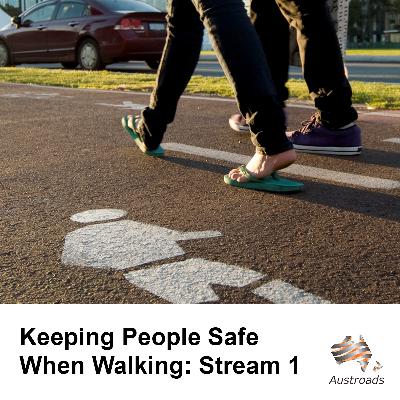
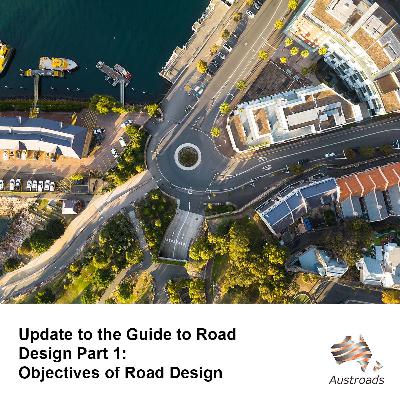
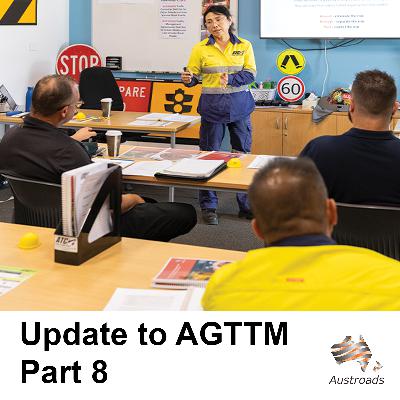
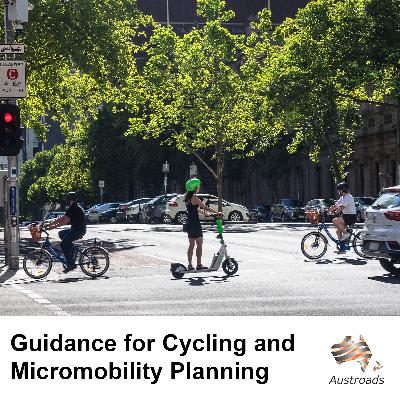

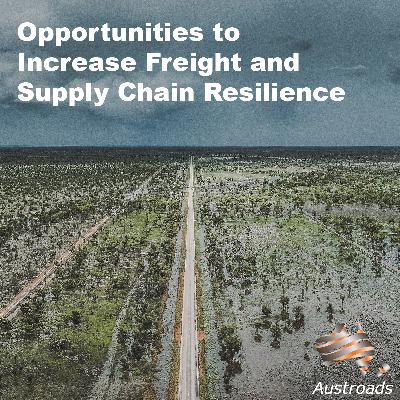



Just found this podcast. My interests are in the supply chain in particular transportation of freight on roads.